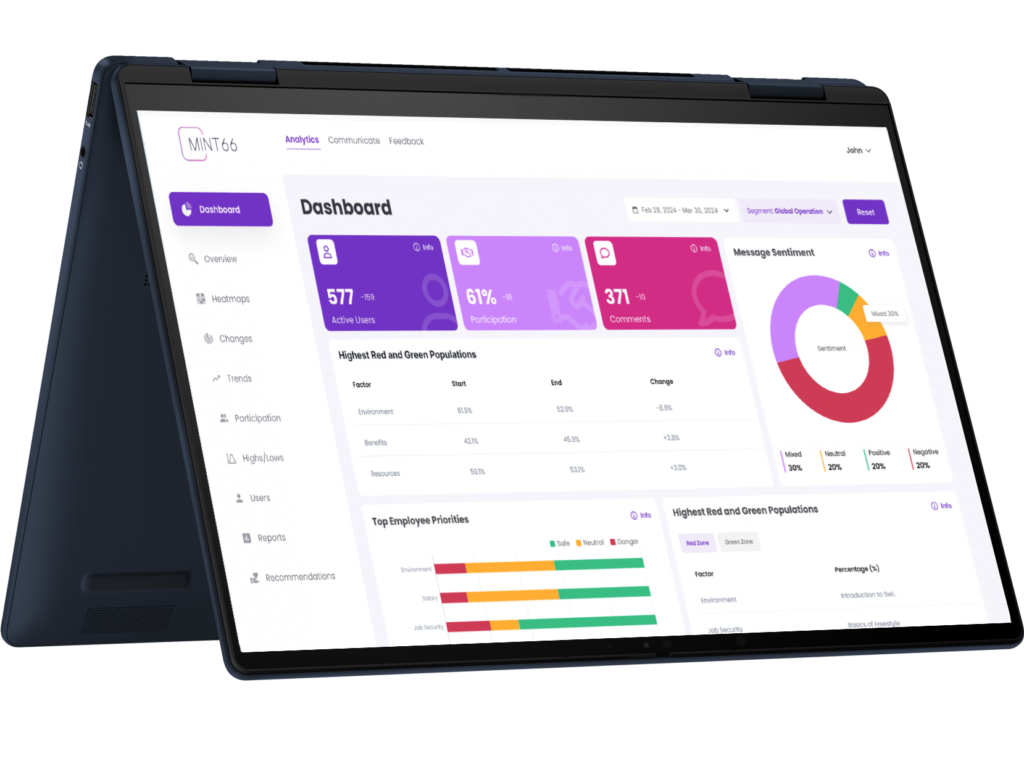Stop Your Talent
Walking Out!
Are you tired of bleeding cash because your talent keep leaving?
It’s time to start measuring what matters. Mint66 is the only employee feedback platform that tells you not just how your team feels, but what’s truly important to them.
If you could know what was important to your people, how valuable would that be ?
Our purpose-built feedback platform gives you rich, actionable data to make your company an even more attractive place to work.
Boost Retention and Drive Engagement
Discover your employees' top priorities
Find and fix exactly what’s driving talent away
Track improvements in satisfaction over time
Watch engagement, productivity, and profits soar
The average cost of losing an employee is
more than their annual salary. For top talent,
it can be at least
Companies in the top quartile of employee
engagement see
compared to those in the bottom quartile*
*Gallup Research

Measure What Matters with Mint66
Say your lowest satisfaction scores are for work/life balance, career progression, and benefits – which matters most? Which do you fix first? Guess wrong, and you lose talent and money.
Mint66 cuts out the guesswork. With Mint66, you can easily compare data points and see what matters most across your whole company or specific teams. And it’s so simple and easy, you can do it several times a year – or even continuously.
Our Pricing
Monitor Employee feedback 24/7/365. Make better business decisions based on the results.
EX Feedback
24×7 Employee Experience Feedback
from $8*
per user/per month
paid annually in advance
- Understand employee priorities
- Track mood and sentiment by factor
- Measure impact of interventions
180 Peer Feedback
Continuous team-based reviews
from
$7*
per user/per month
paid annually in advance
- For in-team peer feedback
- Tracks performance competencies
- Compare teams & peers
360 Feedback
Executive/leader review platform
from
$260*
per manager/leader
paid annually in advance
- For leaders and managers
- Tracks performance competencies
- Includes self-assessment comparisons
* All plans incur a one-time setup fee, based on requirements
See Pricing Page for more details
Our technology is
trusted by high-performing
businesses across the globe.
What Our Clients Say About Us
See Mint66
in Action
Get in touch today and let’s talk about your unique needs. We’ll show you how easy it is to start measuring what matters.
Please fill out the form and let us know the best time to arrange a call or a demo.
Not a fan of forms? No problem, email hello@mint66.com and we’ll be in touch.

